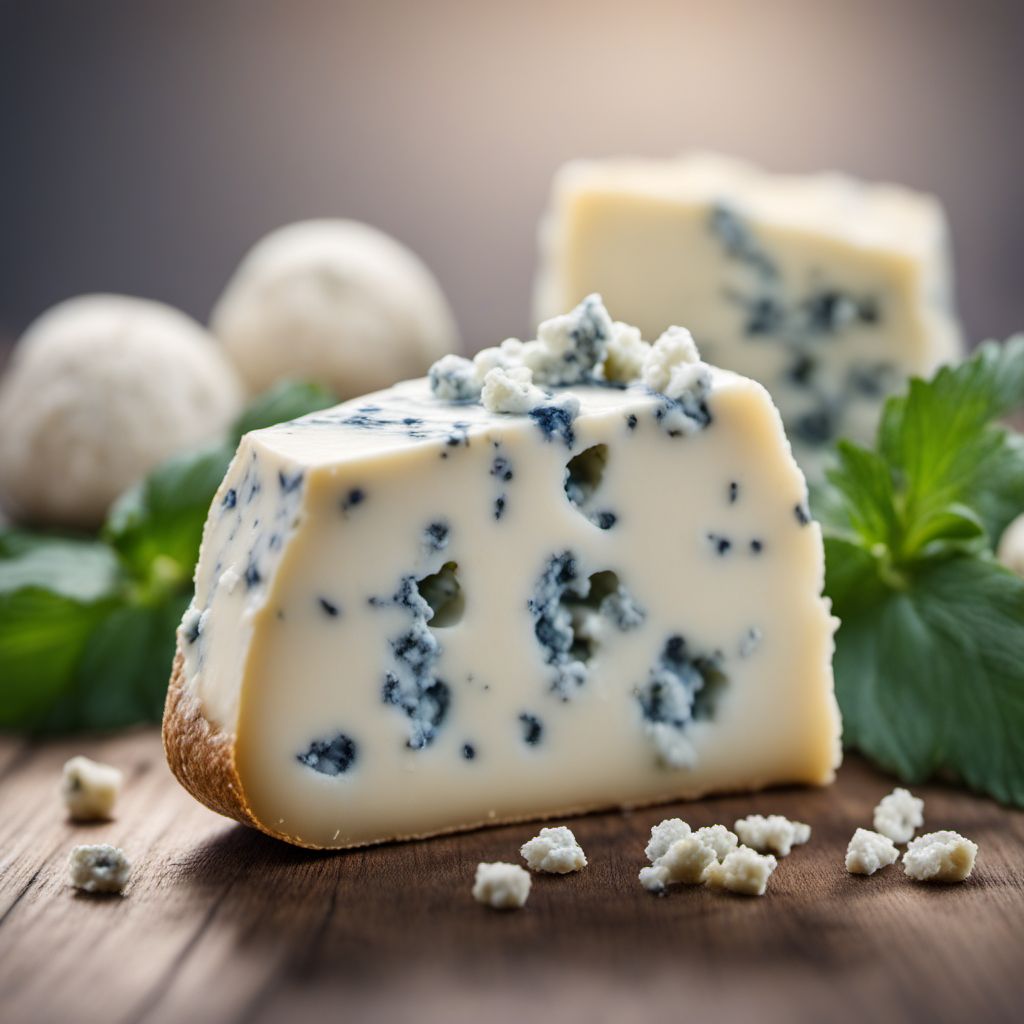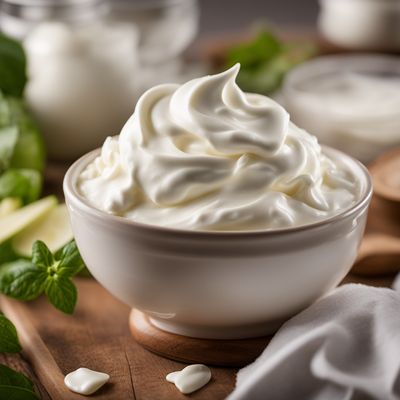
Ingredient
Blue cheese flavour
The Bold and Tangy Indulgence
Blue cheese flavor is a distinctive and pungent taste that adds depth and complexity to various dishes. It is characterized by its sharp and tangy notes, along with a creamy and crumbly texture. The flavor is often associated with blue cheese varieties, but it can also be replicated using other ingredients.
Origins and history
The origins of blue cheese flavor can be traced back to ancient times when the technique of introducing mold into cheese was discovered. Blue cheese, such as Roquefort or Gorgonzola, is known for its unique flavor profile, which is achieved through the introduction of specific molds during the cheese-making process. The flavor has since been replicated in various forms, including dressings, sauces, and seasonings.
Nutritional information
Blue cheese flavor is not a significant source of nutrients on its own, as it is primarily used as a seasoning or ingredient in small quantities. However, it does provide some protein, calcium, and vitamin B12 when consumed in larger amounts.
Allergens
Blue cheese flavor is derived from cheese, which is made from milk. Therefore, individuals with lactose intolerance or dairy allergies should avoid consuming products that contain blue cheese flavor.
How to select
When selecting blue cheese or products with blue cheese flavor, look for options that are made from high-quality ingredients and have a well-balanced flavor. The cheese should have a creamy texture and a pleasant aroma. Avoid products that have an overpowering ammonia smell or signs of mold growth.
Storage recommendations
To maintain the freshness and quality of blue cheese or products with blue cheese flavor, store them in the refrigerator at a temperature between 35°F and 45°F (1.7°C and 7.2°C). Keep them tightly wrapped or in airtight containers to prevent them from drying out or absorbing odors from other foods.
How to produce
Producing blue cheese flavor at home requires specialized knowledge and equipment for cheese-making. It is recommended to leave the production to professional cheese producers who have the expertise to create the distinct blue cheese flavor.
Preparation tips
Blue cheese flavor can be used in various ways to enhance the taste of dishes. It can be crumbled over salads, melted into sauces or dressings, or used as a topping for burgers or steaks. It pairs well with fruits, such as pears or apples, and can be incorporated into dips or spreads for added flavor.
Culinary uses
Blue cheese flavor is commonly used in salads, dressings, sauces, and dips. It is also a popular choice for cheese boards or charcuterie platters. The flavor can be incorporated into various dishes, such as pasta, risotto, or stuffed mushrooms, to add a tangy and creamy element.
Availability
Blue cheese flavor is widely available in regions where cheese is produced. It can be found in supermarkets, specialty cheese shops, or online retailers that offer a variety of cheese products.
More ingredients from this category » Browse all

Caramel flavour
The Sweet Symphony of Caramel

Sour cream flavour
The Creamy Tang

Truffle flavour
The Essence of Earthly Delight

Rosemary flavour
The Aromatic Herb

Plum flavour
The Sweet Symphony of Plum Essence

Honey-cinnamon-flavored flavour
Sweet and Spicy Symphony: The Magic of Honey-Cinnamon-Flavored Flavour

Orange flavour
The Essence of Citrus

Muesli flavour
A Symphony of Crunch and Sweetness: Unveiling the Muesli Flavor

Beef flavour
The Savory Essence: Beef Flavor

Guava flavour
Tropical Delight: Exploring the Exquisite Guava Flavor

Tandoori flavour
The Fiery Essence of Indian Cuisine

Almond flavour
"The Nutty Elixir: Exploring the Delicate Allure of Almond Flavour"